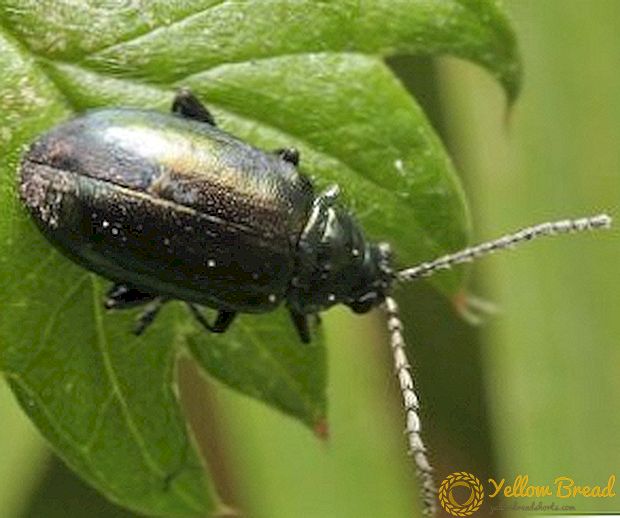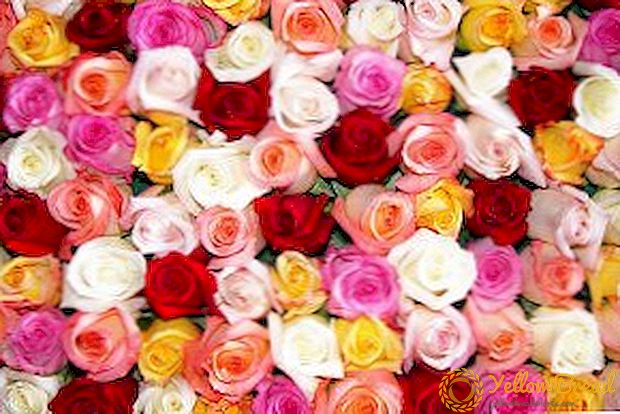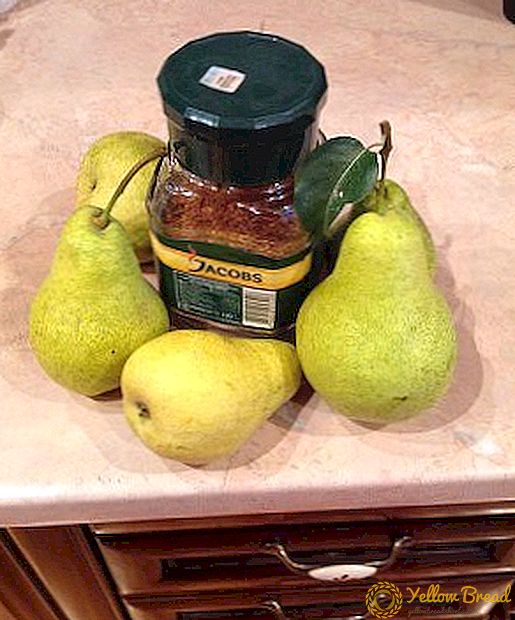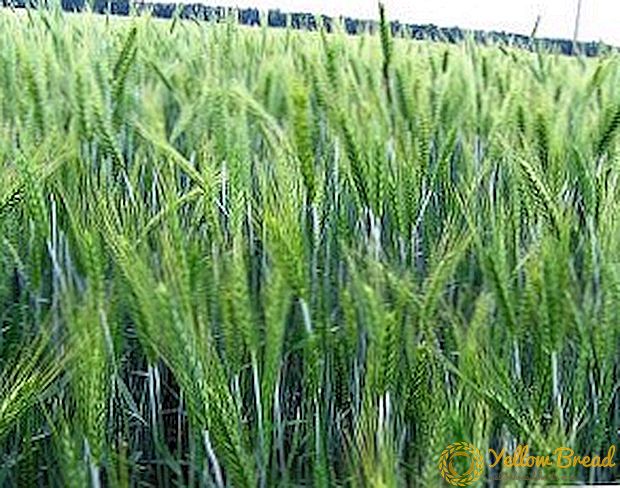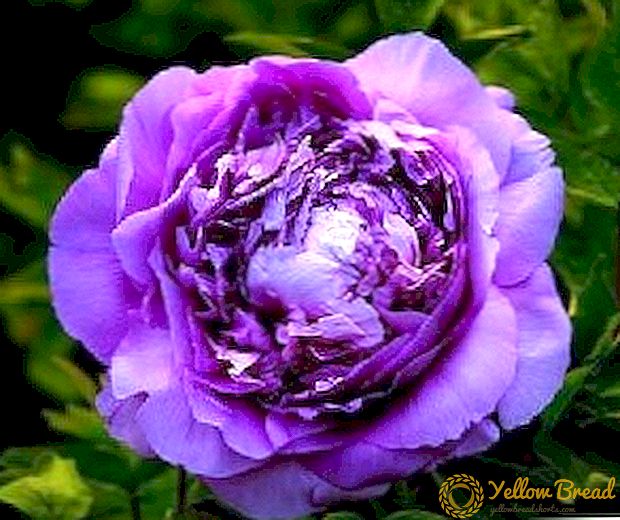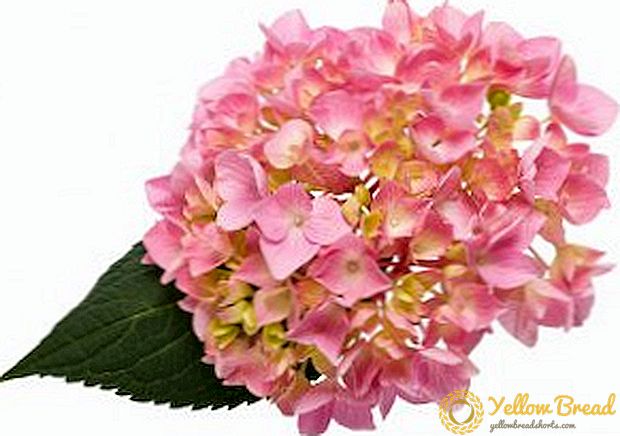 The real queen of the garden, magnificent decoration and the pride of every self-respecting gardener is the large-leaved hydrangea. From this article you will learn all about how to grow such a beauty in your garden and get the most vivid and abundant flowering.
The real queen of the garden, magnificent decoration and the pride of every self-respecting gardener is the large-leaved hydrangea. From this article you will learn all about how to grow such a beauty in your garden and get the most vivid and abundant flowering.
- Description of the species
- Where to plant large-leaved hydrangea
- The choice of lighting
- What kind of soil does a flower like?
- Rules for planting large-leaved shrubs
- Basic rules of care
- Watering
- Top dressing
- How to shape the crown of a plant
- Preparing for the winter
- Difficulties in growing
Description of the species
Large-leaved hydrangea - one of the most spectacular and ornamental deciduous shrubs from 80 species of hydrangeas growing throughout the world. Translated from the Greek, Hydrangea macrophylla means “vessel with water”, which means that it loves watering and moist soil very much, and it is best rooted in regions with high annual precipitation.  Having appeared in Europe at the end of the 19th century, it successfully acclimatized and settled in aristocratic gardens.
Having appeared in Europe at the end of the 19th century, it successfully acclimatized and settled in aristocratic gardens.
Hydrangea is a non-frost resistant shrub and requires mandatory shelter for the winter. Withstands air temperatures in winter -12 ... -15 ° C, and some species up to -18 ° C.In appearance, this bush is spherical, reaching 2-3 m in height in a warm climate and 0.7-1.5 m in a cold one.
Large-leaved hydrangea is also called broadleaved due to the ovate bright green shiny leaves, reaching 20 cm in length, with large triangular teeth along the edges.
Flowers of this plant up to 3 cm in size, from pale pink to lilac and blue color, are collected in large clusters with a diameter of 15-20 cm. The color of flowers directly depends on the level of acidity of the soil. So, on slightly acidic soil flowers are pink, purple and even red, and on acidic - blue. Bushes bloom in July and August. You can grow large-leaved hydrangea as a greenhouse, garden crop or as a houseplant. Ideal for hedges, but as a single plant also looks great.
Where to plant large-leaved hydrangea
The first and most important step in the cultivation of large-leaved hydrangea will be the choice of a landing site in the garden with suitable lighting and soil.
The choice of lighting
It is best tolerated planting large-leaved hydrangea in the spring on a cool and overcast day. The perfect place to be lit by the sun. not less than 6 hours per day in the morning and in the evening. Dining summer rays can dry out the soil, and in the shade the bush blooms much later and the flowering is not abundant. It is not recommended to plant hydrangea under a tree, as the latter will take all the moisture from the soil itself. 
What kind of soil does a flower like?
The plant is not the most capricious and can grow in different conditions, even on clay and podzolized earth. But you will see a beautiful bush with a lush bright bloom only on well-drained, acidified soils with humus. It is important to avoid elevated levels of lime and a highly alkaline soil, as this causes the plant to become sick with chlorosis.
Rules for planting large-leaved shrubs
Planting is carried out in the spring after warming the soil and establishing warm weather without the risk of frost. If several bushes are planted, then the minimum distance between them should be 1 m.
Best for landing fit 2-3 year old sapling. The optimal soil for planting will be a mixture of peat, sod, leaf soil and sand in equal quantities. The size of the pit for planting directly depends on the overall quality of the garden soil. If it is sour and rich in fertilizers, then 35х35х35 pits are sufficient, and if it is loamy and poor, then at least 60 cm on both sides and inwards. If the soil is sufficiently wet or the groundwater level is high, then drainage from gravel, expanded clay or broken brick is surely placed on the bottom. When planting in dry soil a great helper in the future care will be a hydrogel, which is placed on the bottom of the pit in the calculation of 1 tbsp. l on the pit.
The next stage will be a rash of specially prepared ground composition. For pink and red hydrangeas, the pH should be between 6.0 and 6.2. When choosing a blue bloom, the acidity is reduced to 5.0-5.5 pH, and aluminum sulfate is added to the soil.
In the pit, the roots are straightened so that the root collar remains at ground level. A planted bush is watered with 15-20 liters of water and is mulched with a thickness of up to 10 cm. Sawdust, tree bark or needles are perfect for this.
Basic rules of care
What is important is not only the correct planting of large-leaved hydrangea, but also timely care and attention.
Watering
Hortensia is a shrub that will not survive in dry soils without sufficient moisture. So, you need to pour out at least 2 buckets of water once a week.  The only exception is densely mulched soil around the bush or heavy rain. Water for irrigation should be soft, ideally rainwater. Suitable and tap water, but only defended, with the addition of lemon juice or vinegar in order to avoid chlorosis of the plant.
The only exception is densely mulched soil around the bush or heavy rain. Water for irrigation should be soft, ideally rainwater. Suitable and tap water, but only defended, with the addition of lemon juice or vinegar in order to avoid chlorosis of the plant.
Top dressing
There are several feeding stages for growing strong, strong plants with lush flowering:
- in the spring at the beginning of the growing season it is fertilized with a solution of mullein or other organic matter;
- in June, before budding, for lush and bright blooms;
- at the end of summer for the proper formation of the kidneys for the next year.
In the first year after planting, the seedling can be fed with a solution of potassium permanganate, so that rot on roots and shoots does not appear.
As already known, the introduction of some fertilizers directly affects the color of the petals of hydrangea. Iron salts or alum crystals affect the blueing of hydrangeas.For one bush, 8-10 potassium alumina or ammonium-potassium alum is diluted in two liters of water and watered 2 times a month. You can buy in the specialized flower shops compositions for "bluing" hydrangea.
For greater decoration, you can water this mixture on only one side of the plant, then the caps of flower buds will be pink and blue on one bush.  Universal mineral fertilizers for rhododendrons and azaleas, or acidic fertilizers, such as ammonium and potassium sulphates, are also suitable.
Universal mineral fertilizers for rhododendrons and azaleas, or acidic fertilizers, such as ammonium and potassium sulphates, are also suitable.
Buds before flowering can be sprayed with gibberellin solution at the rate of 50 ml per 1 l of water. This contributes to early flowering and long abundant flowering.
How to shape the crown of a plant
The main mistake of many gardeners is the complete cutting of large-leaved hydrangea! This shrub cannot be cut, since you will not wait for flowering. In this species, flower buds are laid on the shoots of last year, and during the winter it is important to keep them from frost and diaper rash.
In the fall, only the inflorescences of this year are cut so that they do not become the dwelling of unnecessary hydrangea pests or a source of disease.  In the spring, after full disclosure, sanitary pruning is carried out, removing broken branches and several old shoots to stimulate the growth of new ones.
In the spring, after full disclosure, sanitary pruning is carried out, removing broken branches and several old shoots to stimulate the growth of new ones.
Preparing for the winter
Do not wait for the first frost to start cover the plant.
- Already in mid-September, we cut off all the leaves, except for the top ones, which protect flowering buds.
- We wrap the bush in 2 layers of burlap or lutrasil.
- After the beginning of the constant small frosts we bind the bush, bend down to the ground on the pre-laid spruce branches or sawdust. The substrate springs and does not allow the shoots to break under the weight of snow.
- From above we fall asleep with leaves or needles, we cover again with lapnik branches so that the snow lasts longer.
This is the most reliable shelter that will protect even from severe frosts. In the spring you should not rush to the disclosure, as unexpected, even late spring frosts can destroy the plant.
Difficulties in growing
Even experienced gardeners will tell you that the large-leaved hydrangea is spoiled, and many face almost the same growing problems:
- after buying a large-leaved hydrangea, it is important to plant as soon as possible in the open ground so that the plant does not die;
- when transplanting from a pot to a garden, the soil and the root system cannot be disturbed, since all the forces will later be spent on flowering, and the root system will disappear;
- first, after planting, fertilize the plant as often as possible with a further reduction of top dressing, as it is used to greenhouse conditions and it is difficult for it to adapt to the new substrate and independently extract nutrients from it;
- the wrong choice of site for planting, for example, strongly lit during the whole day, and as a result - burning of leaves and dry soil;
- with excessive watering of hydrangeas, rotting of roots and stems is possible.

